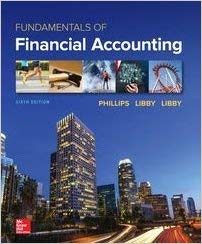Question
please read paper and help me make a intro and conclusion to this Comparison of Audit, Scientific, and Legal Evidence Standards 1. Audit- Auditing evidence
please read paper and help me make a intro and conclusion to this
Comparison of Audit, Scientific, and Legal Evidence Standards
1.Audit- Auditing evidence is reviewed by auditors to make sure companies are reporting their financial statements within the federal, state, and local laws. Examples are income taxes, bank reconciliations, income statements, balance sheets, bank statements, and bookkeeping.
2.Scientific-Scientific evidence is reviewed by scientists and doctors by conducting tests and experiments to form a hypothesis. Examples are theories, hypothesis, tests, lab work, and observations.
3.Legal- Legal evidence is evidence interpreted by the judge and the jury to prove whether a person is guilty or innocent. Examples are voting, eye witnesses, contracts, court statements, and all evidences.
Consideration of Sample Size, Methods, and how sampling affects evidence.
Auditor determines the sample size based on three key indicators:
1.ARO - Acceptable risk of overreliance. This is the risk an auditor is willing to take based on the effectiveness of controls and/or the rate of tolerable misstatements.
2.TER - Tolerable exception rate. The exceptions an auditor will accept from a population and still deem the controls as effective.
3.EPER - Estimated Population exception rate. The amount of exceptions an auditor expects to discover before testing begins.
Sampling methods:
1.Random method - This method gives equal opportunity for any item in the population to be included in the sample.
2.Haphazard Method - Selection is made without regard to size, source, type, or other characteristics.
3.Monetary unit sampling - This is the most commonly used to estimate monetary misstatements within the financial data.
4.Judgmental sampling - The auditor, using their personal experience and situational awareness will choose the sample.
Sampling size and method have a distinct affect on the evidence found by the auditor. The larger the sample size the larger the opportunity for the discovery of errors or misstatements. The method chosen can also, lead to the gathering of evidence that may allow the auditor to make assertions about the financial statements of a company.
Relevance, Reliability and Sufficiency of Evidence
Evidence gathered by the auditor must provide support for the contents of its audit report.
Sufficiency of audit evidence is the relevant measure of the quantity of audit evidence.
Appropriateness of evidence is the high quality of the evidence, i.e., its significance and reliability to support the auditor's opinion.
- Relevant:Whether the audit evidence obtained through the auditor is relevant or not depends on the objective of audit procedures.
- Reliable:Evidence obtained through the auditor is credible rather than definitive. We are unable to consider such evidence 100% reliable for establishing an opinion. Trustworthiness of audit evidence depends on its source and nature of such evidence.
- Sufficient:Sufficiency is the relevant measure of quantity. Audit proof is sufficient when they are available in adequate quantity. An auditorutilizes different audit procedures to obtain sufficient audit evidence like test checking.
Sufficiency of evidence in an audit relates to the following characteristics in laymen's terms:
Materiality and Risk.
Economic Factors.
Size and characteristics of the population.
Brief statement on the 8 types of audit evidence
There are eight types of audit evidence which are,
1.Physical examinationis the inspection, count, or tangible assets. This is where the cash and inventories are physically counted.
2.Confirmationswhich are the receipts for the written or oral responses from a third party, who verifies the accuracy of the information's that has been requested by an auditor, and there are three types.
1) positive blank (most reliable)
2) positive w info already filled in
3) negative
3.Inspections/Documentationsis where an examination of a client's documents and records is done. There are two ways of doing this, first being internal where the client is there and expense reports are used, and second, and external being done which means they go over the materials outside of the company, which is the most reliable.
4.Recalculationsare done to check the computations and calculations.
5.Inquiriesare a written or oral response to questions.
6.Re-performanceis the process of rechecking transfers or information and ensuring that is has been properly recorded and posted.
7.Analytical Proceduresare comparisons and studies of the relationships. This is required during the planning and completion phases.
8.Observationsconsists of watching a process or procedure being performed by someone else.
References:
https://www.toppr.com/guides/accounting-and-auditing/tools-of-auditing/audit-evidence/#:~:text=Evidence%20collected%20by%20the%20auditor%20should%20support%20the,relevance%20and%20reliability%20to%20support%20the%20auditor%E2%80%99s%20opinion.
Step by Step Solution
There are 3 Steps involved in it
Step: 1

Get Instant Access to Expert-Tailored Solutions
See step-by-step solutions with expert insights and AI powered tools for academic success
Step: 2

Step: 3

Ace Your Homework with AI
Get the answers you need in no time with our AI-driven, step-by-step assistance
Get Started


